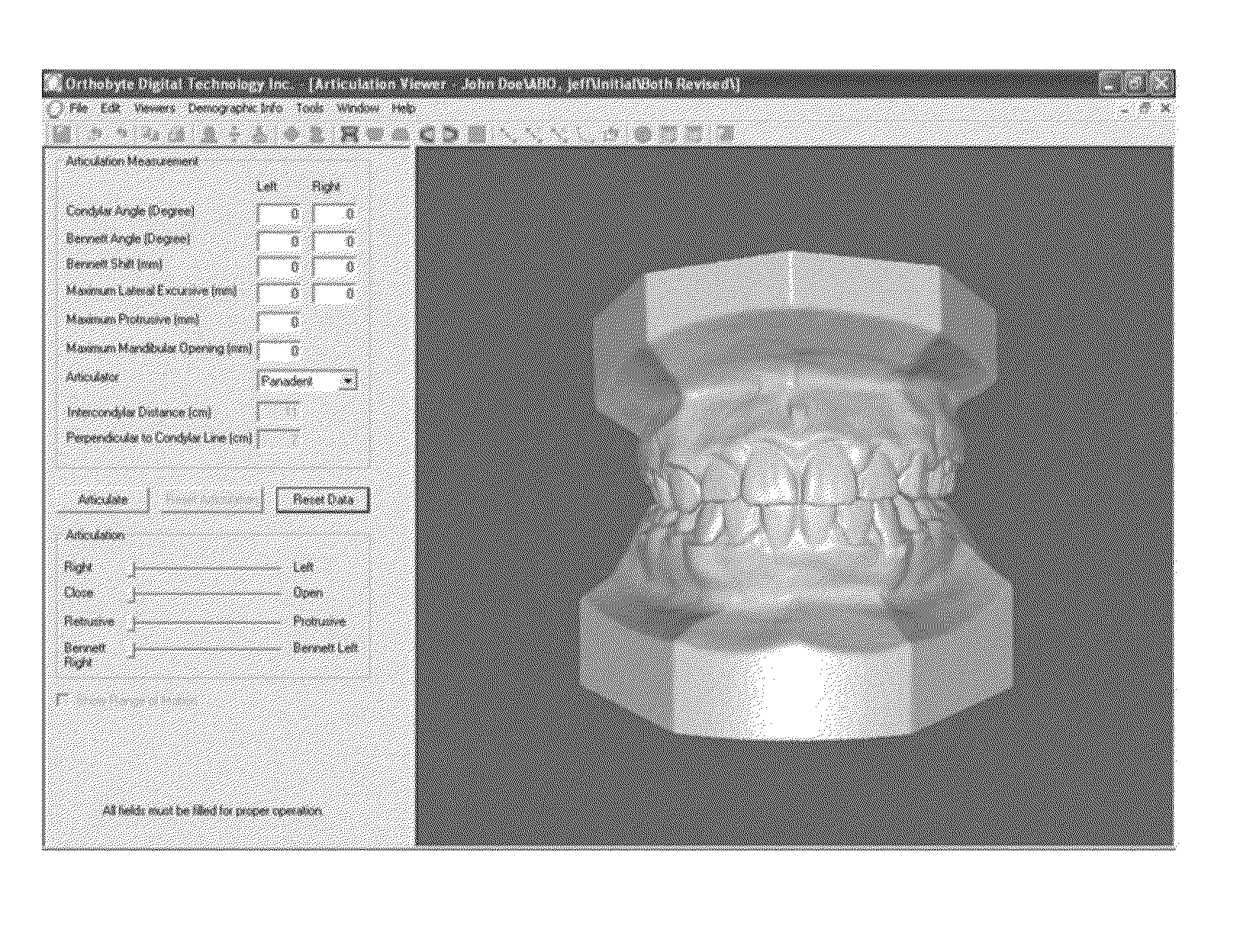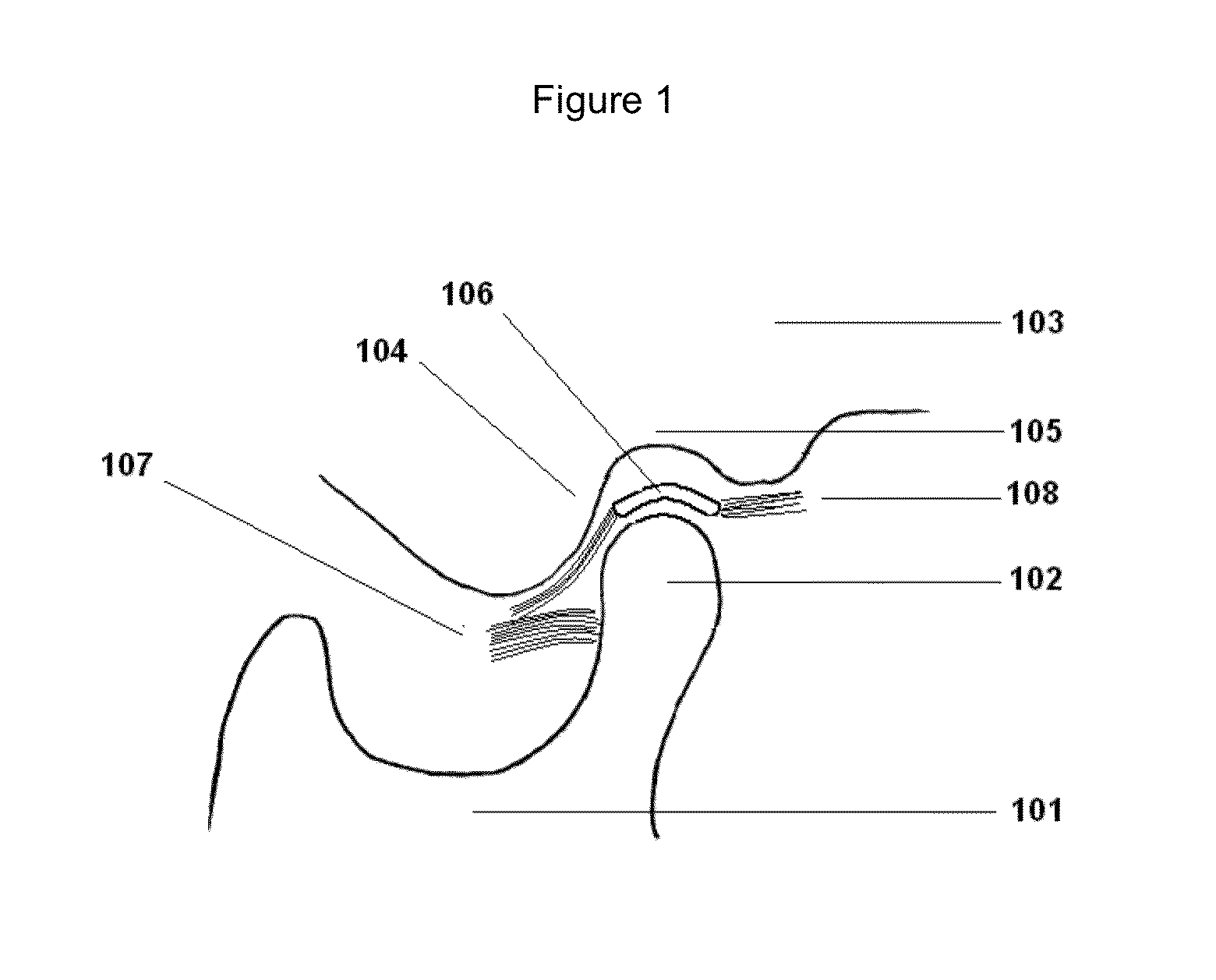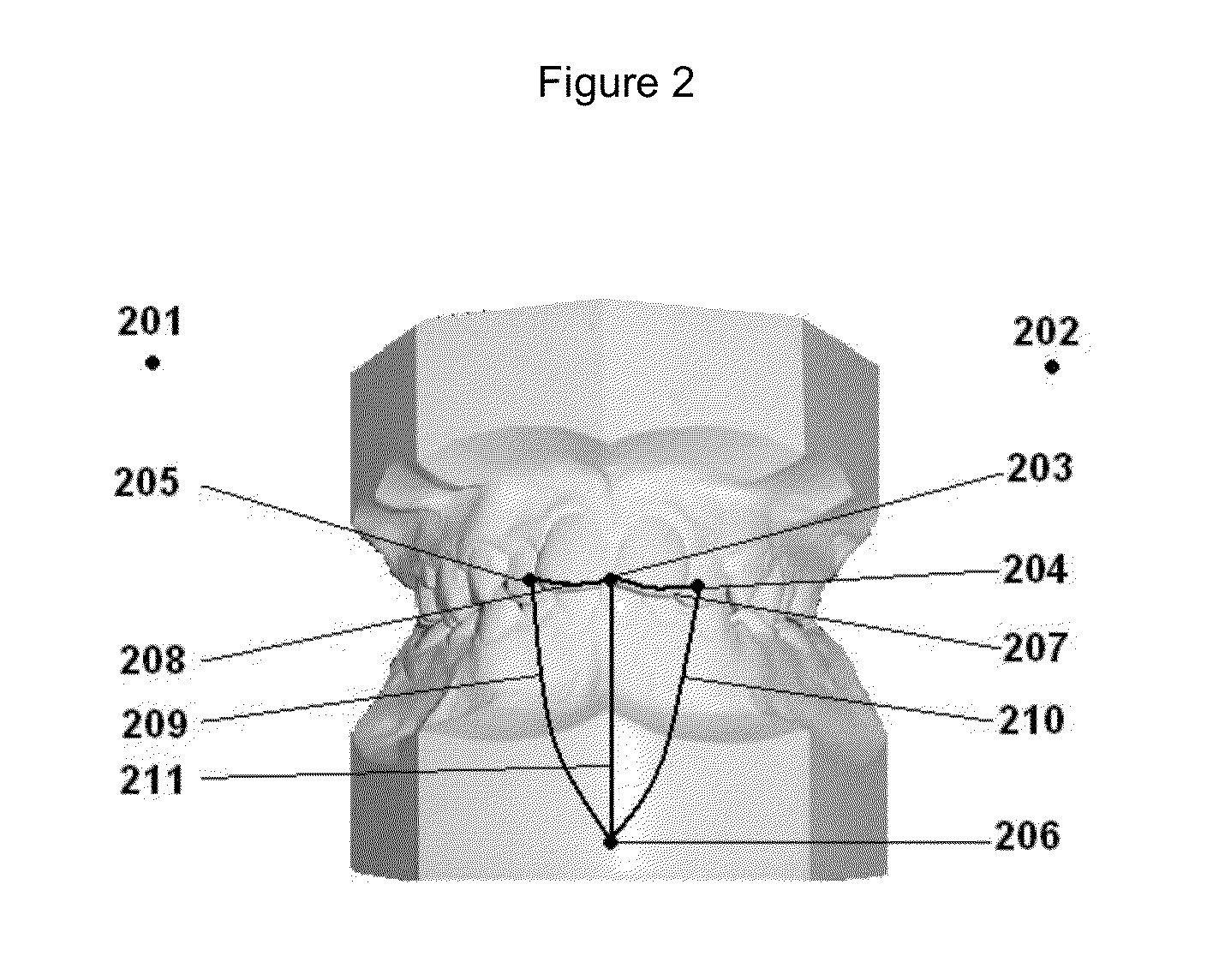Virtual articulator
a virtual articulator and articulator technology, applied in medical informatics, medical simulation, analog and hybrid computing, etc., can solve the problems of complex function and occlusion of patient's jaws and teeth, differences in anatomical structures form the left and right sides, and mandible or maxilla adaptation
- Summary
- Abstract
- Description
- Claims
- Application Information
AI Technical Summary
Benefits of technology
Problems solved by technology
Method used
Image
Examples
Embodiment Construction
[0052]For the purposes of this submission, this document will focus on digital dental / orthodontic models, but the uses of the virtual articulator are not limited to digital dental / orthodontic models.
[0053]Prior to using the virtual articulator, it is necessary to have access to digital models. Plaster or stone maxillary and mandibular dental arches can be created from impressions provided by the clinician and aligned using a client-provided bite registration. These models are scanned using a laser scanner to create a digital representation of the models. Alternatively, the client may provide a closed-surface stereo lithographic file format of a model for use with the virtual articular. Files from any scanning system that produces three dimensional closed-surface STL or stereo lithographic data format can be processed for use with this invention. A copy of the three dimensional files are stored on a resident server at the originating company and then downloaded to the client's comput...
PUM
 Login to View More
Login to View More Abstract
Description
Claims
Application Information
 Login to View More
Login to View More - R&D
- Intellectual Property
- Life Sciences
- Materials
- Tech Scout
- Unparalleled Data Quality
- Higher Quality Content
- 60% Fewer Hallucinations
Browse by: Latest US Patents, China's latest patents, Technical Efficacy Thesaurus, Application Domain, Technology Topic, Popular Technical Reports.
© 2025 PatSnap. All rights reserved.Legal|Privacy policy|Modern Slavery Act Transparency Statement|Sitemap|About US| Contact US: help@patsnap.com



